Azure Evolution: Day 3 - Transforming from Zero to Hero ☁
 Saurabh Adhau
Saurabh Adhau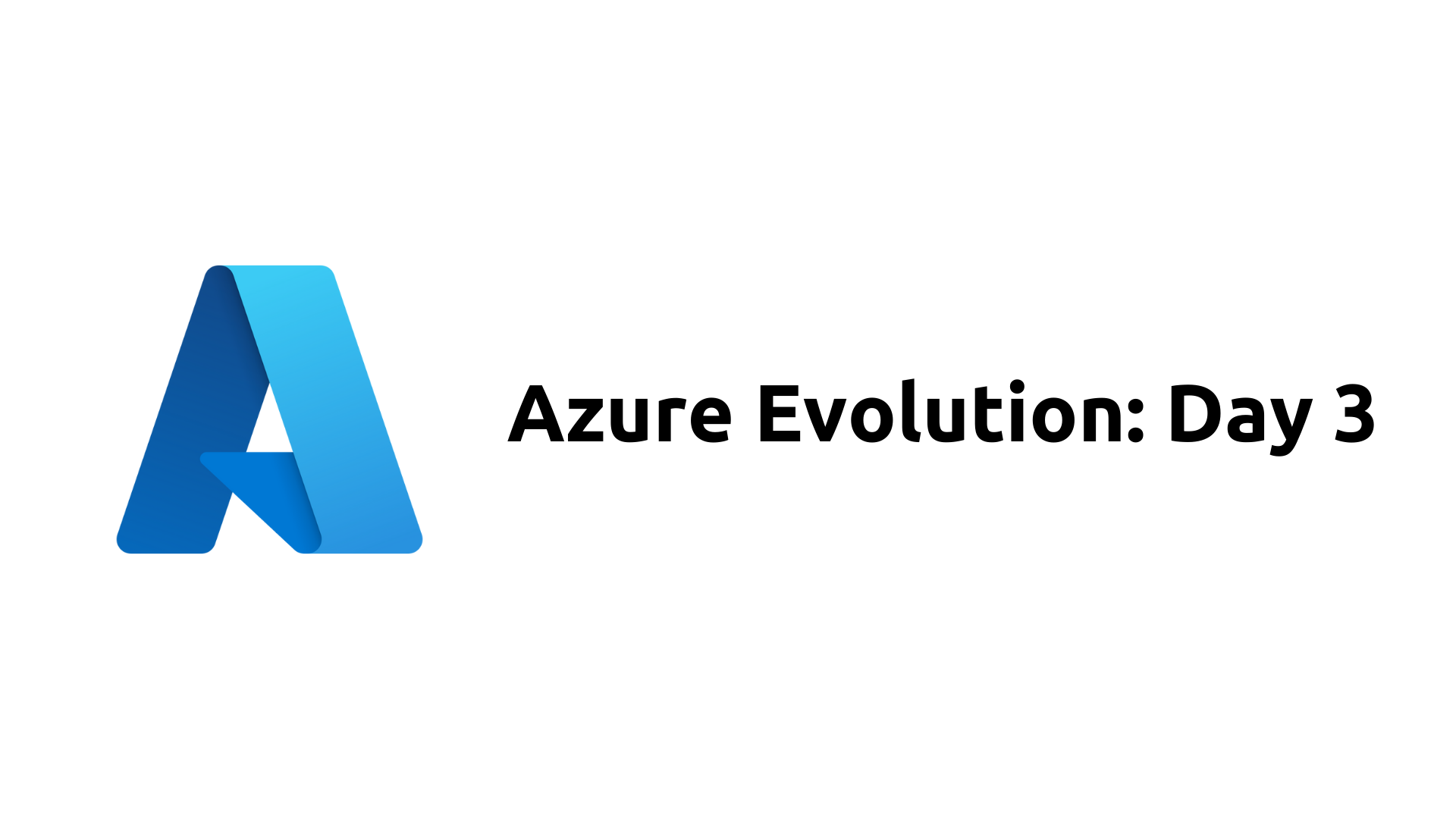
Introduction
Microsoft Azure offers a wide range of services and components to build and manage cloud-based applications. Understanding the concepts of Azure Resources, Resource Groups, and Azure Resource Manager (ARM) is essential for effectively managing your Azure infrastructure. In this article, we'll explore these concepts and their key characteristics.
Azure Resources
Azure Resources are the building blocks of your Azure infrastructure. These resources can include virtual machines, storage accounts, databases, networking components, and more. Each resource represents an instance of a service or component provided by Microsoft Azure.
Types of Azure Resources
Azure Resources can be categorized into various types, including compute resources, storage resources, networking resources, database resources, and more. Examples of Azure Resources include Azure Virtual Machines, Azure Blob Storage, Azure SQL Database, Azure App Service, and more.
Resource Groups in Azure
A Resource Group in Azure is a logical container or grouping of Azure Resources. It allows you to organize and manage your resources as a single entity for management, billing, and access control purposes. Resource Groups enable you to treat related resources, such as an application and its associated databases, as a cohesive unit.
Key Characteristics of Resource Groups
Lifecycle Management: Resources within a Resource Group can be deployed, updated, and deleted together, simplifying management and resource tracking.
Access Control: Permissions can be assigned at the Resource Group level, allowing you to control who can access and manage the resources within the group.
Benefits of Resource Groups
Management and Monitoring: Resource Groups enable collective management and monitoring of resources, streamlining operations such as deployment and deletion.
Billing and Cost Management: Azure bills are often presented based on Resource Groups, facilitating cost tracking and management.
Access Control: Azure RBAC is applied at the Resource Group level, providing granular control over resource access.
Creating and Managing Resource Groups
- Creating a Resource Group: Navigate to the resource group tab in the Azure portal, provide a name and optional tags, and click on the create button.
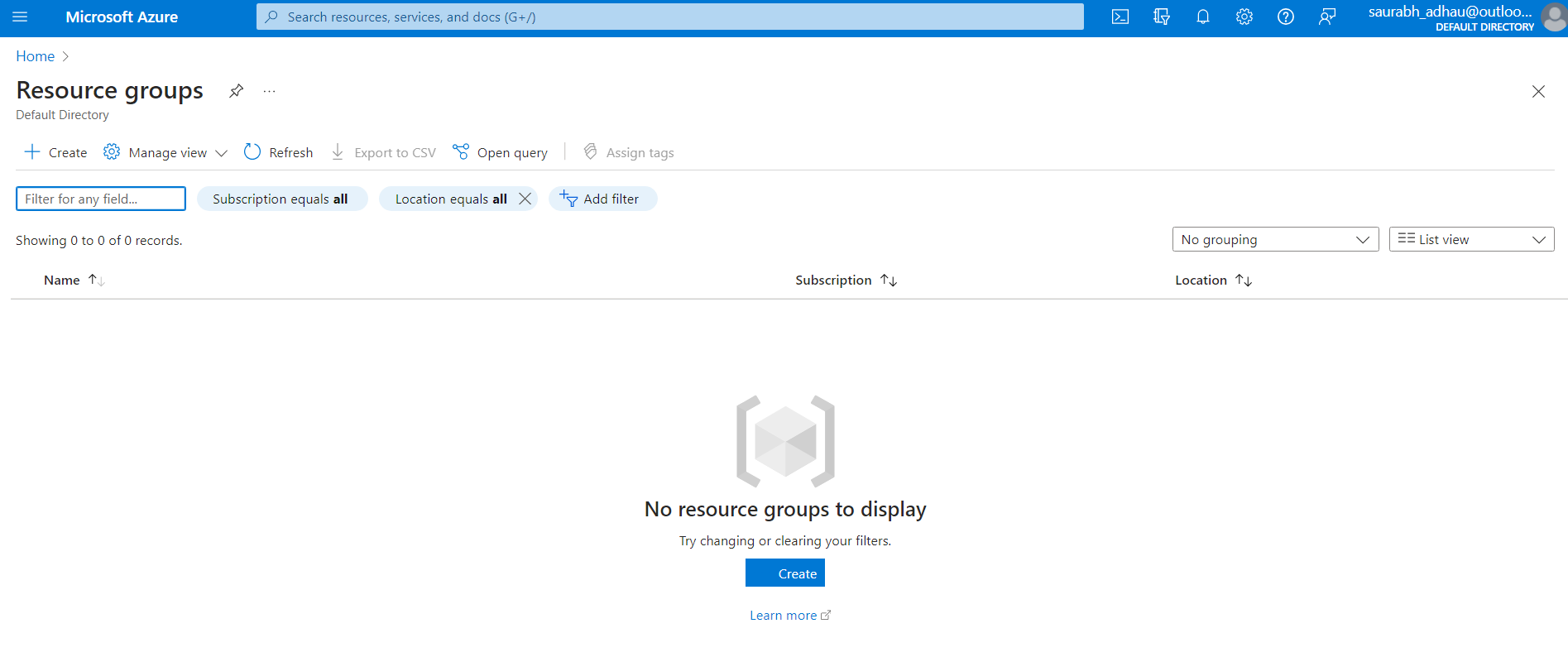
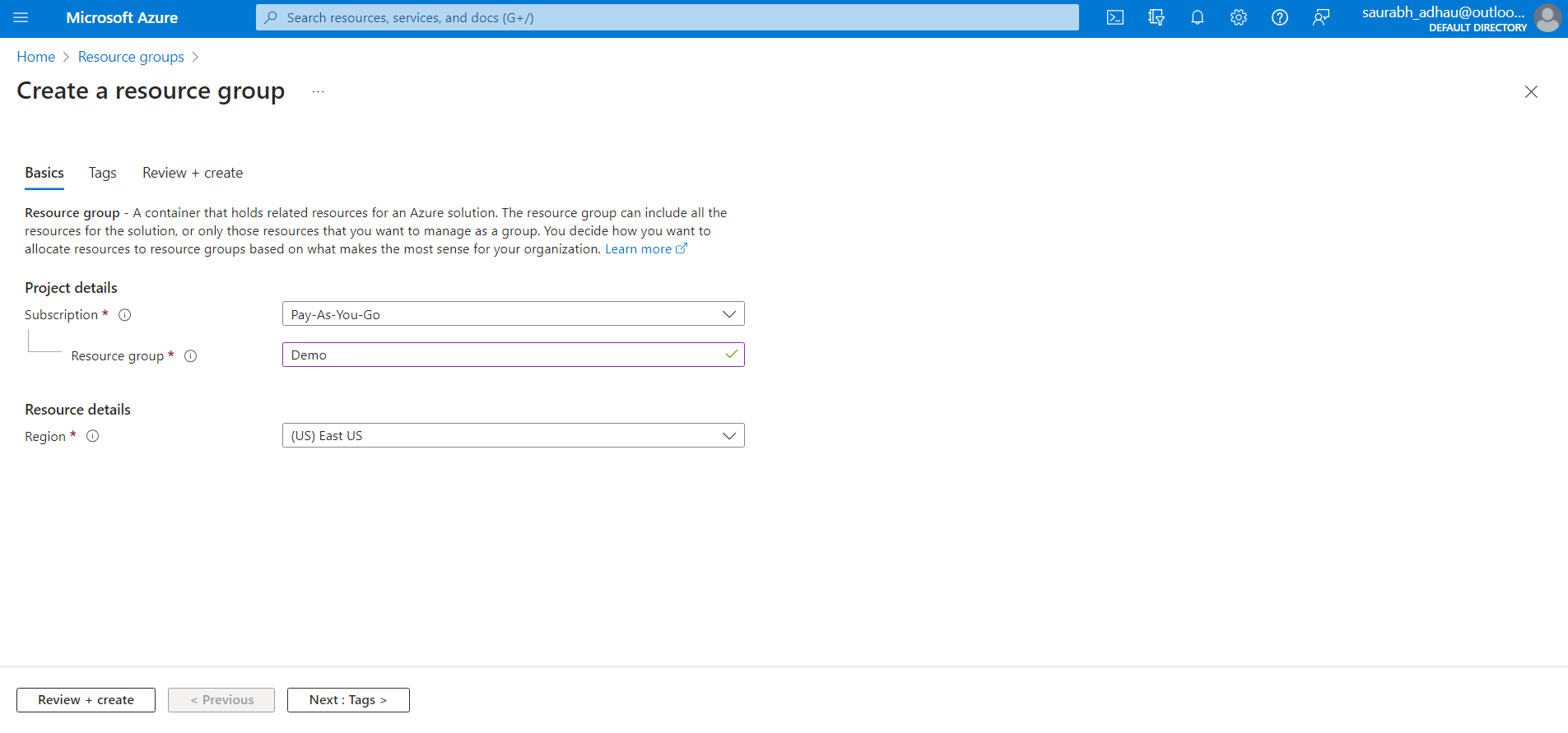
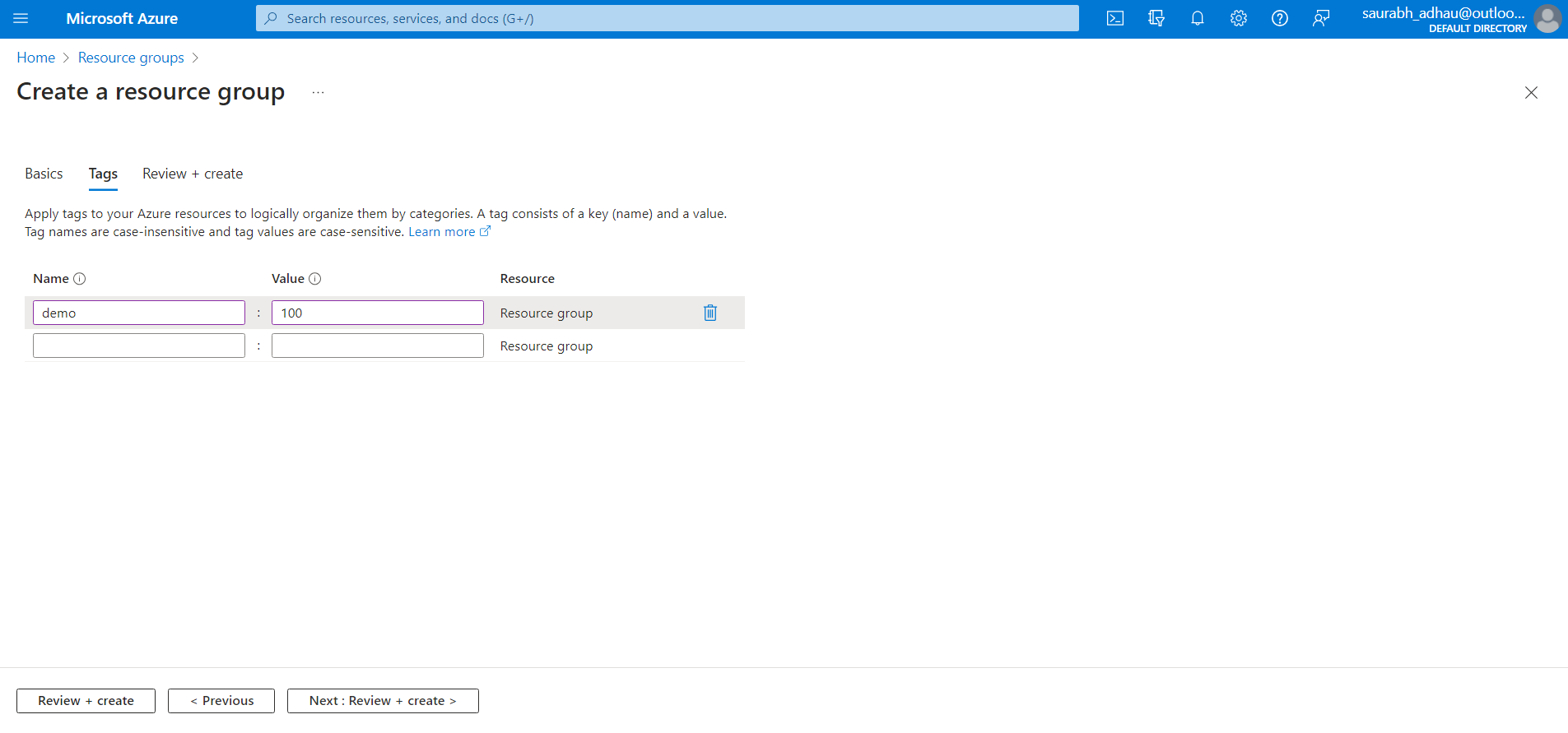
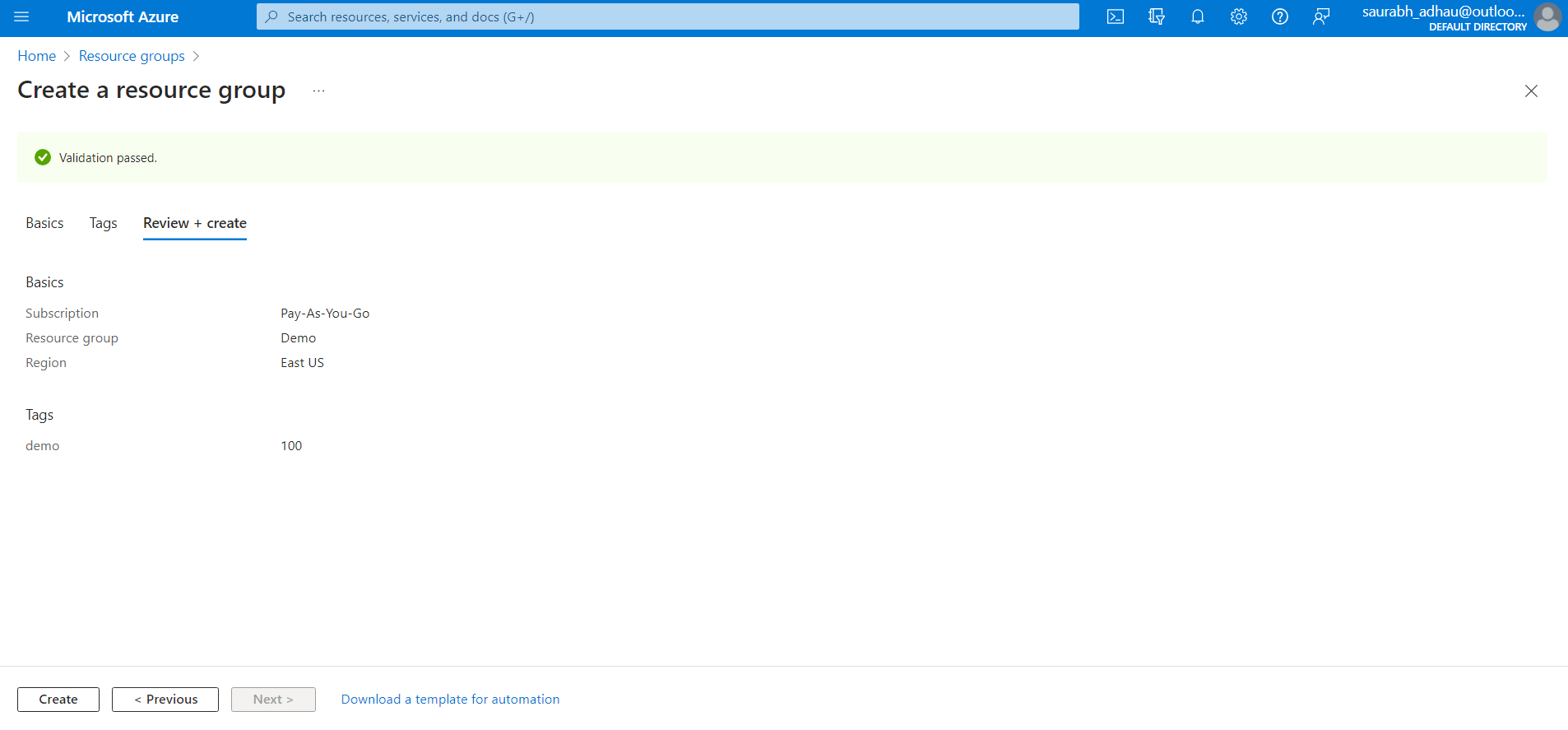
In resource groups list you will see created group.
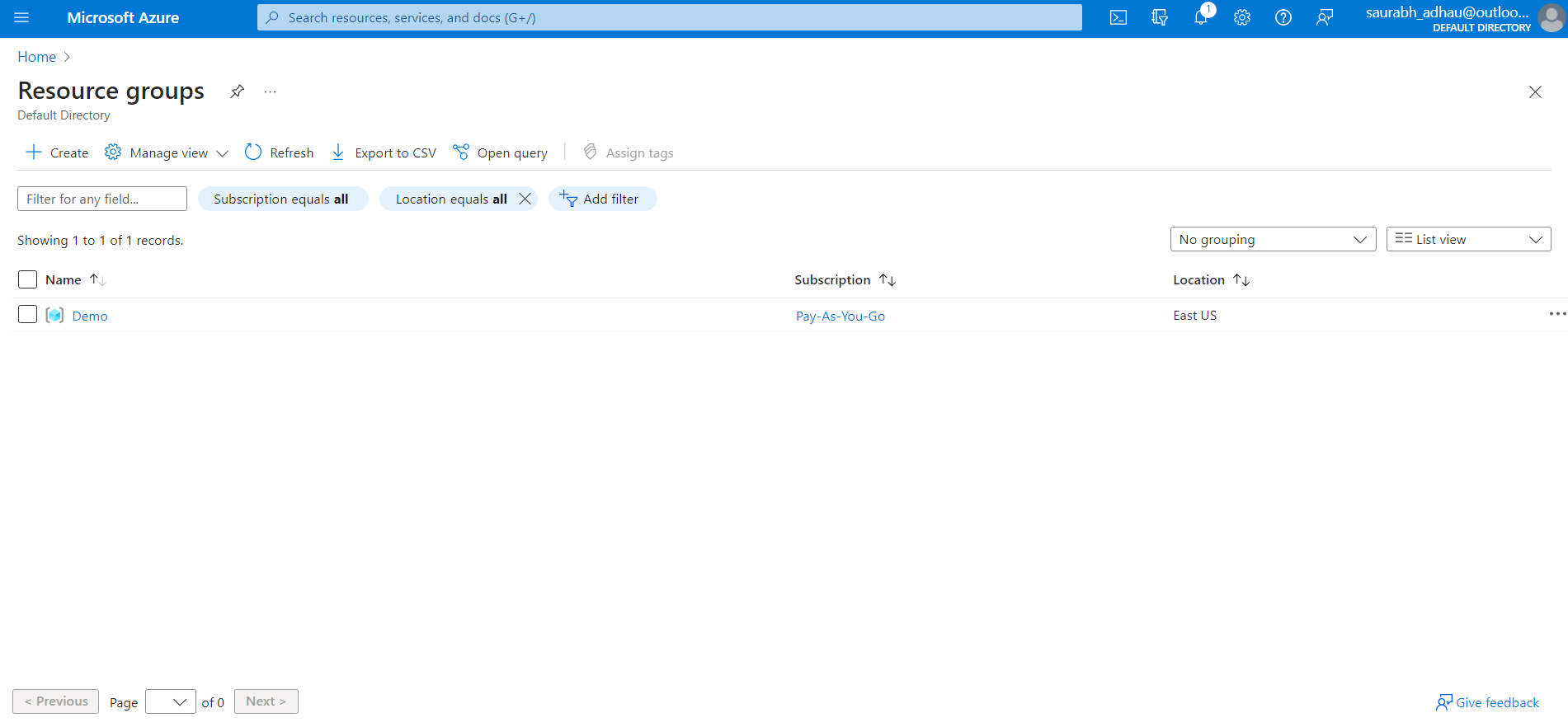
Managing Resources: Organize resources within Resource Groups based on projects, applications, or environments for efficient management and organization.
During the creation of the virtual machine, you will see the name of the created resource group which is mandatory and select region & zones.
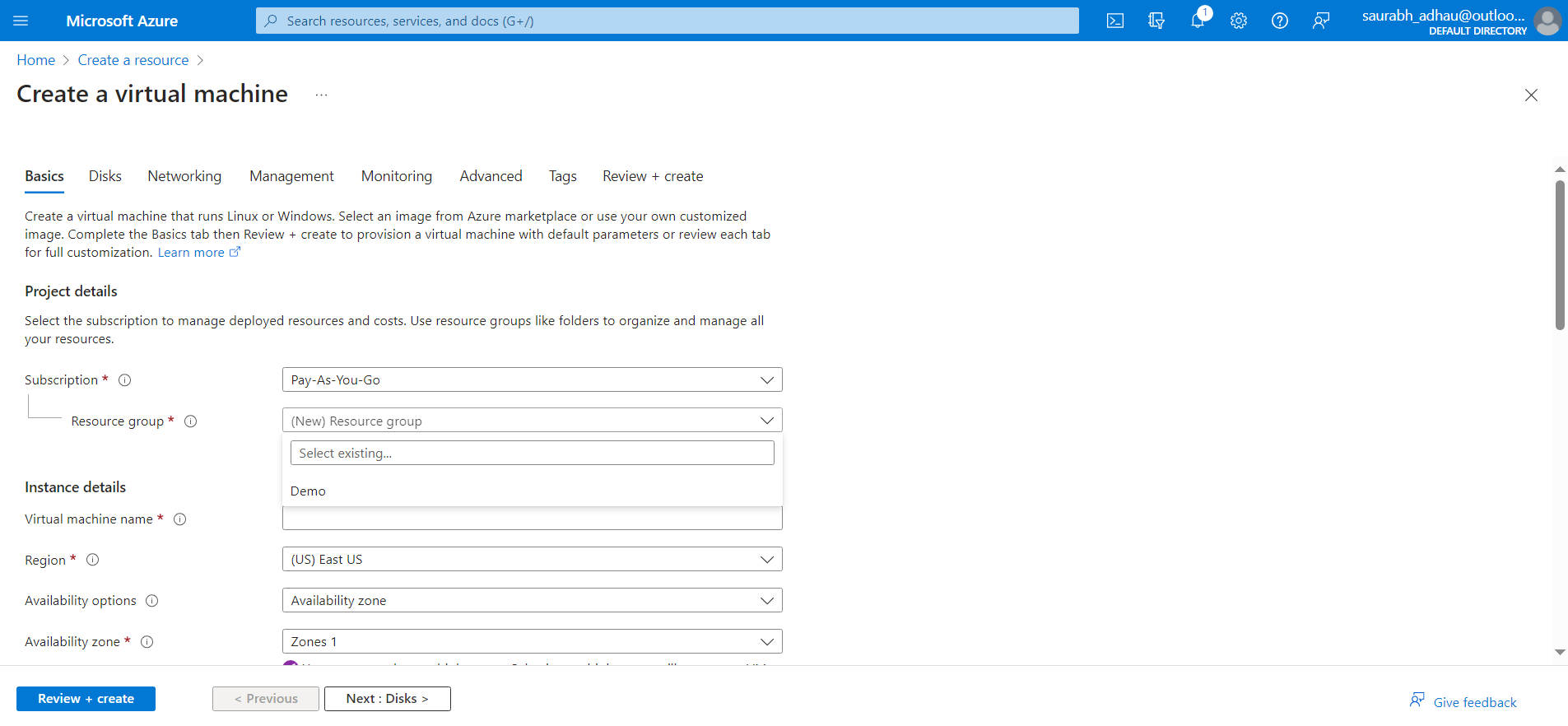
After Downloading the key pair click on review and create and your virtual machine gets created. In the resource groups section, you will see your resources and virtual machine.
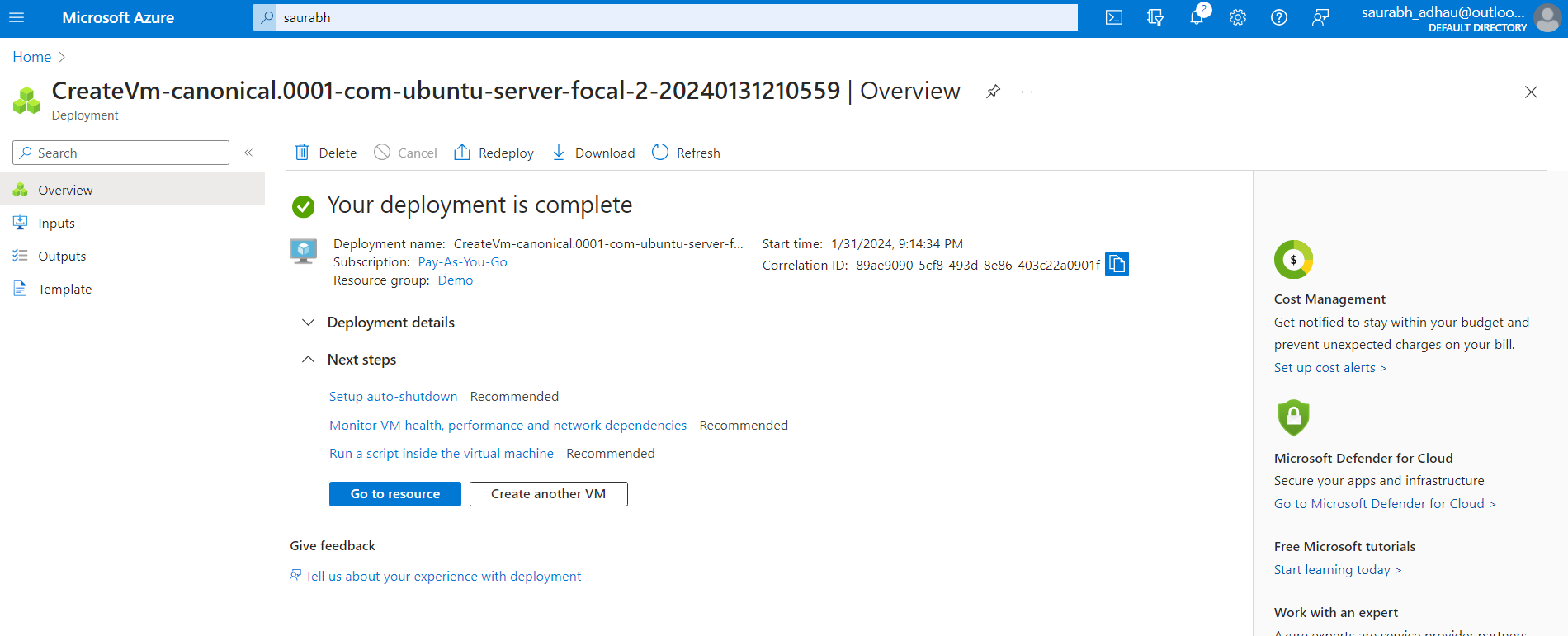
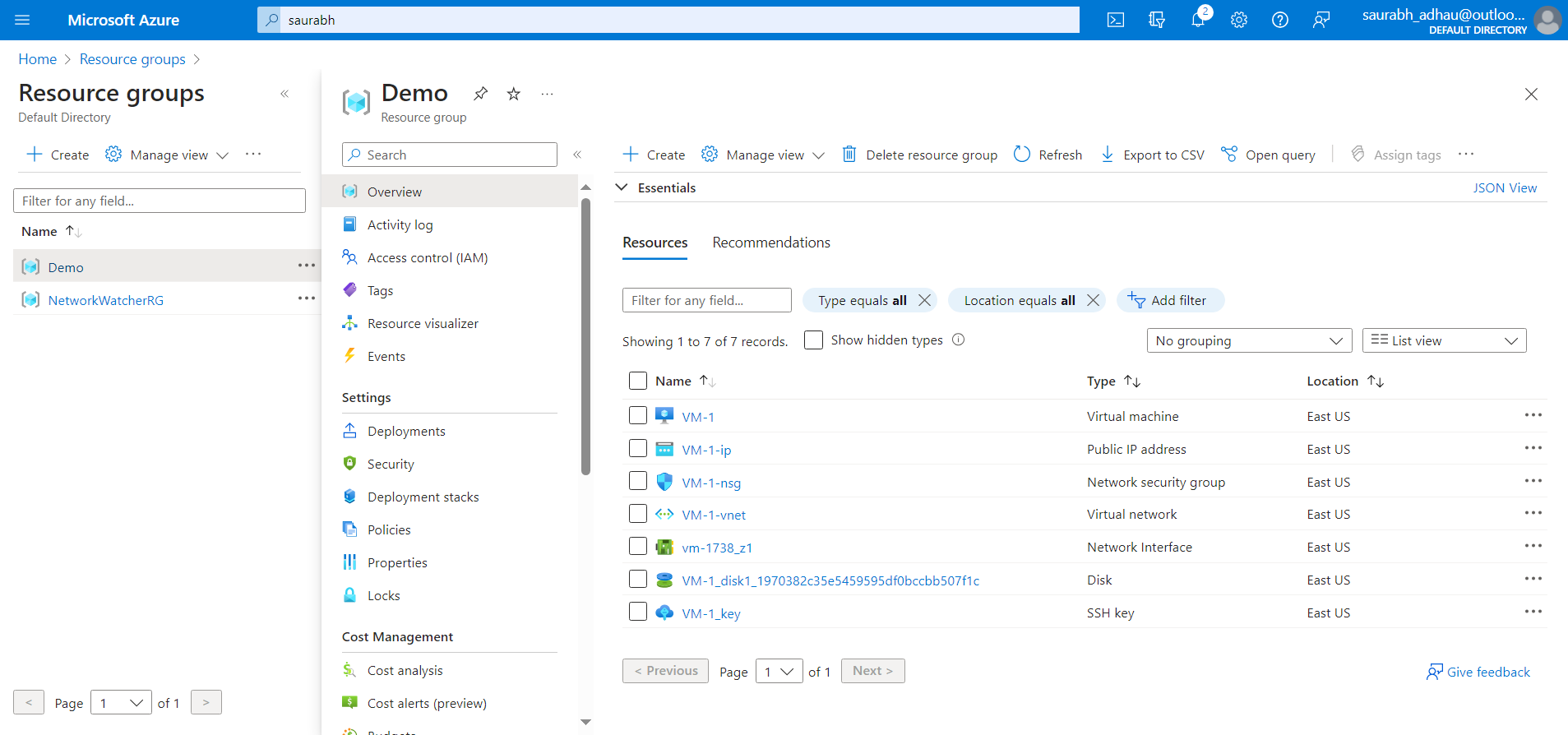
Azure Resource Manager Overview
Azure Resource Manager (ARM) is the deployment and management service for Azure. It provides a management layer that enables you to create, update, and delete resources in your Azure account. ARM offers features such as access control, locks, and tags to secure and organize your resources.
Key Role of Azure Resource Manager
Request Handling: ARM authenticates and authorizes requests sent through Azure APIs, tools, or SDKs before forwarding them to the appropriate Azure service.
Consistency: All requests are handled through the same API, ensuring consistent results and capabilities across different Azure tools and services.
Conclusion
Understanding Azure Resources, Resource Groups, and Azure Resource Manager is essential for effective Azure infrastructure management. By leveraging Resource Groups and ARM, organizations can streamline resource management, ensure efficient cost tracking, and maintain granular access control over their Azure resources. 🛠️🌐
Subscribe to my newsletter
Read articles from Saurabh Adhau directly inside your inbox. Subscribe to the newsletter, and don't miss out.
Written by

Saurabh Adhau
Saurabh Adhau
As a DevOps Engineer, I thrive in the cloud and command a vast arsenal of tools and technologies: ☁️ AWS and Azure Cloud: Where the sky is the limit, I ensure applications soar. 🔨 DevOps Toolbelt: Git, GitHub, GitLab – I master them all for smooth development workflows. 🧱 Infrastructure as Code: Terraform and Ansible sculpt infrastructure like a masterpiece. 🐳 Containerization: With Docker, I package applications for effortless deployment. 🚀 Orchestration: Kubernetes conducts my application symphonies. 🌐 Web Servers: Nginx and Apache, my trusted gatekeepers of the web.